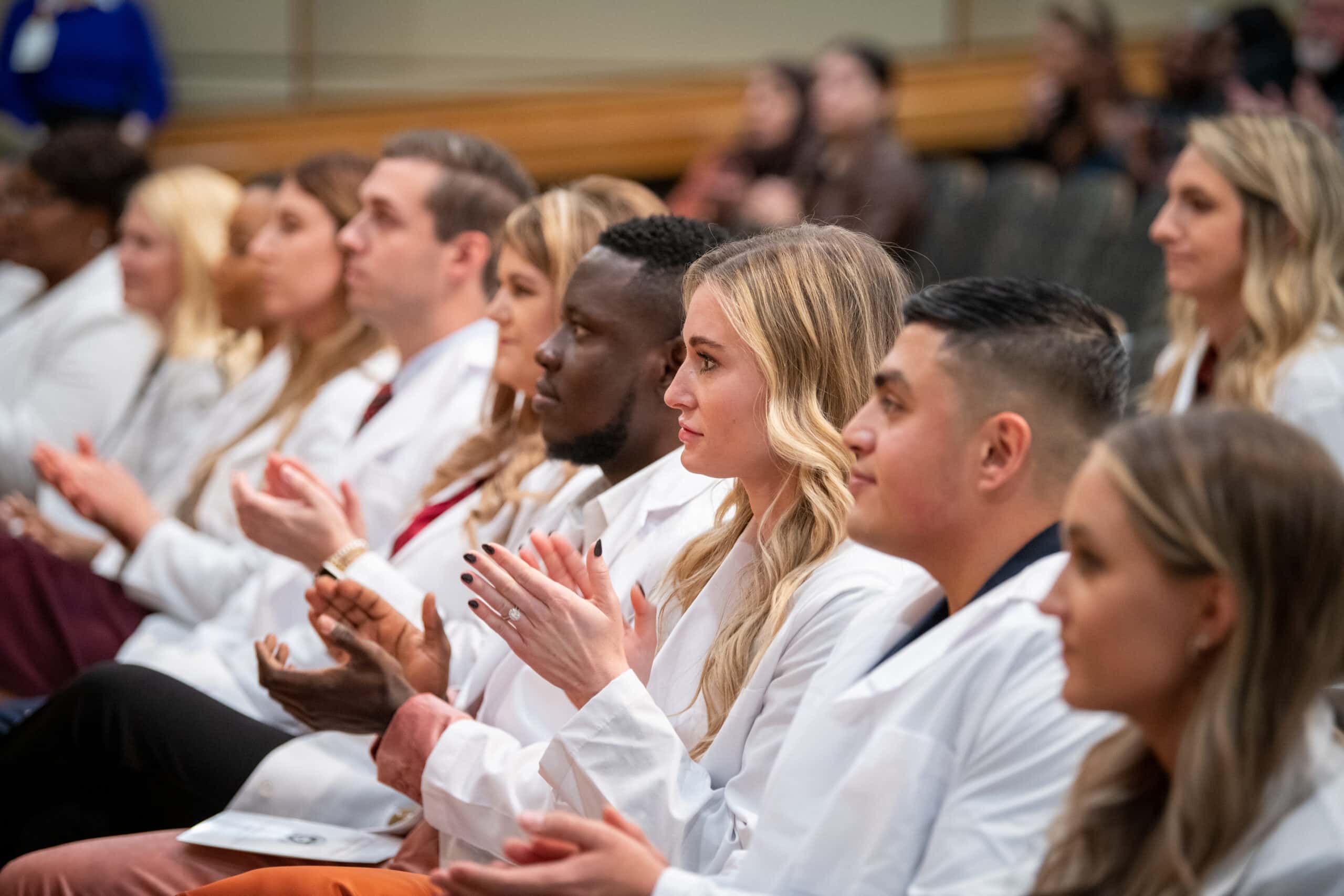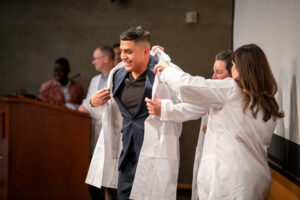View Larger Image

Graduate students wear their white coats during the College of Nursing ceremony.
Image by Bryan Clifton
UAMS College of Nursing Holds White Coat Ceremony for Graduate Programs
| The University of Arkansas for Medical Sciences (UAMS) College of Nursing honored 77 students from its graduate programs during a white coat ceremony held at the Jackson T. Stephens Spine and Neurosciences Institute on the UAMS campus.
“This is the first time we’ve had an in-person white coat ceremony for our graduate students, and we’re excited to begin a new tradition,” said Patricia Cowan, Ph.D., RN, dean of the College of Nursing.
Cowan said the students had a rigorous fall semester and are preparing for advanced-practice studies in the spring. They’re pursuing careers that will place them in vital roles throughout the health care field, she said.
“Nurses are present at every phase of people’s lives — from birth to adulthood and the end of life,” she said. “We’re there in times of vulnerability or fear and in times of great joy.”

A student dons his coat during the College of Nursing’s white coat ceremony for graduate programs.Image by Bryan Clifton
For the students who donned their white coats, a symbol marking the next stage of their education, the ceremony reaffirmed the importance of providing high-quality care to all people, Cowan said.
“Wear your white coats with pride, knowing that you touch the lives of every patient and family you encounter,” she said.
Michelle Gonzalez, Ph.D., CRNA, director of the Doctor of Nursing Practice (DNP) Nurse Anesthesia Program, said physicians typically wore black coats until the late 1800s, when American painter Thomas Eakins unveiled “The Agnew Clinic,” a portrait that depicted a group of medical professionals wearing white. The white coat became standard apparel for American medical students by 1915, and it was adopted by residents, fellows and nurses in the 30 years that followed.
The white coat ceremony originated much later, Gonzalez said. The first ceremony for physicians was held in 1989 at the University of Chicago Pritzker School of Medicine, and it was popularized by Columbia University in 1993. White coat ceremonies for nurses have only become common in the past decade, she said.
Gonzalez said the white coats signify the students’ transition from the didactic phase of their education into one of clinical practice. “We’re very proud of all that you’ve done, and we look forward to seeing all the great work that you’re about to do,” she told them.
Albrey Love, DNP, RN, APRN, clinical assistant professor in the College of Nursing, closed the event by asking family members in the audience to raise their hands if they would trust the students with their medical care, then to keep them raised if they had felt that trust before the students received their white coats. Looking out at a sea of hands, she offered a reminder about the focal point of the ceremony.
“It’s not about the white coat,” she said. “It’s about the person who’s wearing the white coat.”